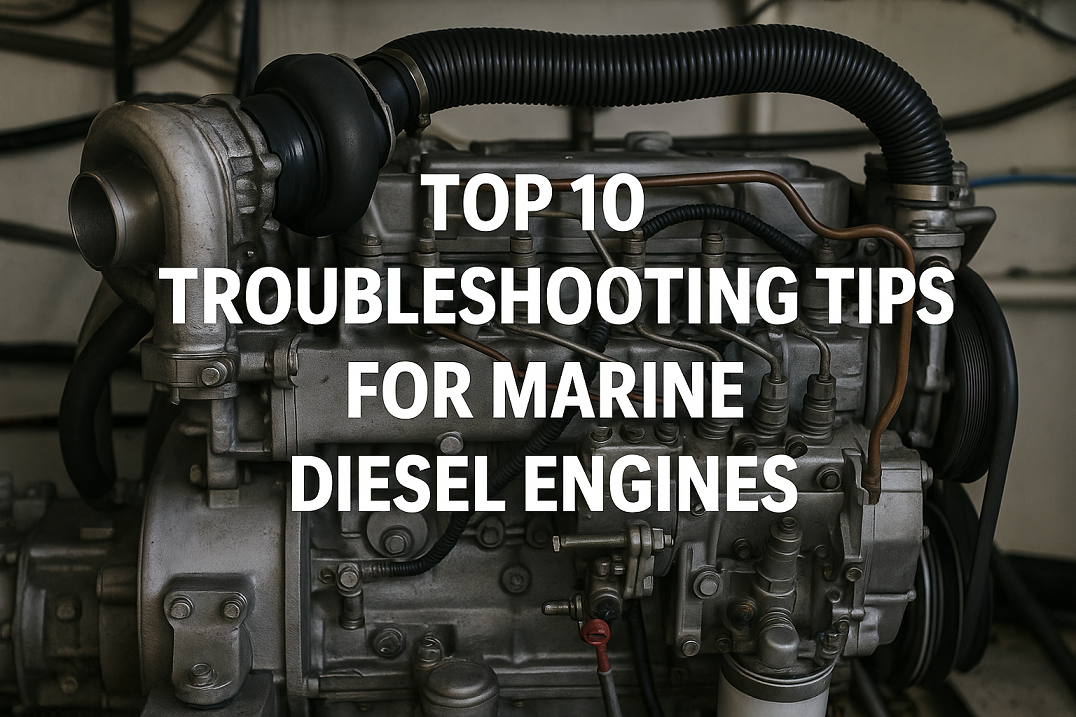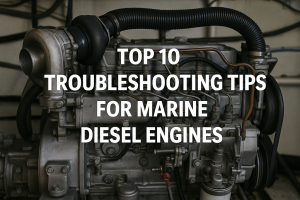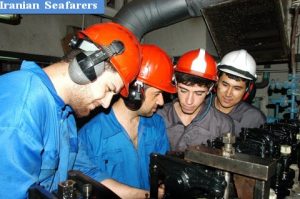Explore the top 10 troubleshooting tips for marine diesel engines. Learn how to identify, diagnose, and resolve common engine problems to ensure safe and efficient vessel operation.
Why Diesel Engine Troubleshooting Matters in Maritime Operations
Marine diesel engines are the backbone of modern maritime propulsion. Whether aboard bulk carriers, container ships, or offshore supply vessels, these powerhouses keep global trade moving. Yet even the most robust engines are subject to mechanical wear, operational stress, and system failures. In an industry where downtime can cost thousands per hour—or jeopardize crew safety—effective engine troubleshooting is a critical competency for every marine engineer.
According to the International Maritime Organization (IMO) and data from DNV, nearly 50% of vessel delays linked to mechanical issues involve propulsion or auxiliary engine faults. In the worst cases, undiagnosed faults lead to fires, blackouts, or grounding incidents.
This guide offers the top 10 expert-backed troubleshooting tips for marine diesel engines, blending real-world scenarios, foundational knowledge, and actionable insights for engine room personnel, cadets, and marine engineering officers.
Understanding the Marine Diesel Engine System
Before diving into troubleshooting, a marine engineer must understand the primary systems in a diesel engine setup:
-
Fuel system: injectors, pumps, filters, lines
-
Air intake and exhaust: turbochargers, valves, manifolds
-
Lubrication system: pumps, coolers, sumps
-
Cooling system: jacket water, seawater circuits
-
Electrical and automation systems: sensors, control units, alarms
Failures are often interconnected. An overheated exhaust valve might originate from a faulty fuel injector or poor turbocharger performance. Troubleshooting is about tracing symptoms to root causes.
Top 10 Troubleshooting Tips for Marine Diesel Engines
1. Diagnose Abnormal Exhaust Temperatures Early
One of the earliest indicators of engine trouble is uneven or high exhaust temperatures across cylinders. These suggest:
-
Poor combustion
-
Faulty injectors
-
Leaking valves
-
Turbocharger imbalance
Actionable Tip: Use pyrometers or thermographic cameras to measure cylinder exhaust. Compare data with manufacturer benchmarks. Cylinder 3 overheating? Suspect injector clogging or valve seat damage.
📘 Reference: Marine Auxiliary Machinery by H.D. McGeorge
2. Listen to the Engine—Literally
Marine engineers often say: “An engine talks to you.” Strange knocking, rattling, or whistling can signal deeper problems:
-
Knocking = detonation or bearing wear
-
Whistling = air leaks or turbocharger fault
-
Hissing = high-pressure fuel or steam leak
Pro Tip: Conduct engine room sound inspections during standby and under load. Use ultrasonic leak detectors if available.
3. Check Lube Oil Quality and Pressure Consistently
Problem Symptoms:
-
Oil pressure drop
-
Foaming in sump
-
Oil discoloration or burning smell
Likely Causes:
-
Pump failure
-
Filter clogging
-
Water/fuel contamination
-
Excessive bearing clearance
Solution: Run lube oil analysis monthly. Look for metal shavings (bearing wear), high TAN (acidification), or water content. Maintain critical pressure per OEM specs—often 2.5–4.5 bar for trunk piston engines.
4. Monitor Fuel Injection Performance
A faulty fuel injector can:
-
Increase fuel consumption
-
Cause knocking
-
Damage piston crowns
-
Create black smoke
Test Method:
-
Conduct cut-out tests using indicator cocks
-
Use fuel pressure test rigs
-
Inspect spray patterns
📘 IMO Model Course 7.02 outlines procedures for engine watchkeeping and troubleshooting.
5. Investigate White, Black, or Blue Smoke
Smoke Type Diagnostics:
-
Black smoke: Incomplete combustion, faulty injectors, clogged air filters
-
Blue smoke: Oil burning due to worn piston rings or valve guides
-
White smoke: Unburned fuel—possible injector fault or low cylinder compression
Troubleshooting Tip: Use smoke color combined with exhaust temperature and engine load to isolate faults.
6. Clean and Inspect Turbochargers Regularly
Common Turbo Issues:
-
Fouling from soot
-
Damaged blades
-
Bearing wear
-
Low boost pressure
Symptoms:
-
Poor acceleration
-
Black smoke
-
Overheating
Inspection Strategy:
-
Check compressor and turbine sides every 1,000–2,000 running hours
-
Log boost pressure vs. load
-
Align findings with logbook data
📘 Read: MAN Energy Solutions Turbocharger Maintenance Manual
7. Watch for Overheating and Jacket Water Problems
Root Causes:
-
Coolant leaks
-
Thermostat failure
-
Airlocks
-
Fouled heat exchangers
Best Practices:
-
Bleed air after coolant refills
-
Backflush heat exchangers quarterly
-
Use infrared thermometers to scan high-temp zones
🛠 Analogy: Think of your engine cooling system like a ship’s circulatory system—blockages can be deadly.
8. Don’t Ignore Vibration and Misalignment
Vibration Symptoms:
-
Excessive shaft movement
-
Loose foundation bolts
-
Resonance at certain RPMs
Causes:
-
Misaligned couplings
-
Bent crankshaft
-
Unbalanced rotating masses
Fix It:
-
Use vibration analysis tools
-
Conduct shaft alignment checks using laser tools or dial gauges
📘 Class societies like DNV and Lloyd’s Register require vibration monitoring for Class 1 engines.
9. Track Fuel Consumption Against Power Output
Fuel Efficiency Drops May Signal:
-
Internal leakage in pumps
-
Poor combustion
-
Dirty nozzles
-
Improper load balancing on multi-engine setups
Diagnostic Tool: Engine Performance Monitoring System (EPMS)
Compare Specific Fuel Oil Consumption (SFOC) trends monthly.
Fun Fact: A 1% drop in combustion efficiency on a large 2-stroke engine can increase annual fuel costs by $100,000+.
10. Integrate Digital Engine Monitoring Systems
Modern vessels use Condition-Based Monitoring (CBM) and Engine Data Logger (EDL) systems.
What They Do:
-
Alert on parameter deviation
-
Provide trend analysis
-
Reduce human error
-
Enable remote diagnostics
Tip: Marine engineers should regularly analyze data rather than relying solely on alarms. Cross-reference with manual checks for anomalies.
📘 Explore DNV’s CBM Guidelines
Case Studies: Real-World Marine Engine Troubleshooting
Case Study 1: The Leaking Injector
A third engineer aboard a Panamax bulk carrier noticed black smoke and a sharp drop in cylinder 4 exhaust temperature. A fuel cut-out test confirmed a leaky injector. The injector was replaced, restoring normal operation. Early detection prevented further damage to the piston crown.
Case Study 2: Lube Oil Contamination Disaster
On a product tanker in the Gulf, unexplained oil foaming was ignored during startup. Within hours, a main bearing failed due to water ingress into the lube oil system caused by a ruptured cooler. The engine required a costly drydock repair. Post-incident, the company mandated monthly oil testing and stricter alarm management.
Frequently Asked Questions (FAQ)
Q1: What’s the first step in diesel engine troubleshooting?
A: Always start with visual and sensory checks—smoke color, sound, temperature, and vibration. Then refer to engine monitoring logs and manufacturer manuals.
Q2: How do I detect a leaking cylinder head gasket?
A: Look for coolant in lube oil, compression drop, or bubbles in the expansion tank. A pressure test confirms the leak.
Q3: Why is my engine overheating under partial load?
A: Possible causes include thermostat malfunction, airlocks in cooling system, or fouled heat exchangers.
Q4: Can digital systems replace manual troubleshooting?
A: No. Digital tools are helpful, but skilled human observation remains essential. Many issues are caught early by experienced ears and eyes.
Q5: How often should marine diesel engines undergo preventive maintenance?
A: Follow OEM maintenance schedules, typically every 500–2,000 hours for inspections and servicing. Log-based predictive maintenance is increasingly common.
Conclusion: Prevention is the Best Troubleshooting Tool
Marine diesel engines are complex but predictable machines. When something goes wrong, they leave clues—exhaust patterns, pressure drops, unusual sounds. The best marine engineers are those who not only understand the mechanics but can interpret these clues in real time, preventing small problems from becoming voyage-ending failures.
Whether you’re a cadet learning your first diagnostic checklist or a seasoned second engineer preparing for Class 1 exams, mastering these troubleshooting techniques will keep your engines—and your career—running smoothly.
⚓ Want more marine engineering guides, STCW certification prep, or digital engine simulator access? Visit MaritimEducation.com to take your engineering skills to the next level.
References
-
International Maritime Organization. (2023). STCW Convention and Code. https://www.imo.org
-
MAN Energy Solutions. (2022). Turbocharger Operations Manual. https://www.man-es.com
-
DNV. (2023). Condition-Based Maintenance Guidelines. https://www.dnv.com
-
McGeorge, H.D. (2013). Marine Auxiliary Machinery. Butterworth-Heinemann.
-
Marine Insight. (2024). Marine Diesel Engine Troubleshooting Guide. https://www.marineinsight.com




